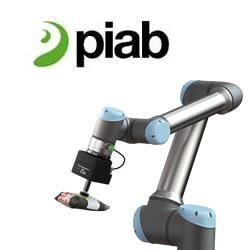3D Printers for Home-Use to Generate Hardware and Material Spend of up to $1.2 Billion by 2018, finds Juniper
Consumer 3D Printing & Scanning: Service Models, Devices & Opportunities 2014-2018, notes that similar to the mobile device ecosystem, content will be critical to the success of consumer 3D printing.
Hampshire, UK - 17th June 2014: New findings from leading hi-tech analysts, Juniper Research, reveal that the combined market value from consumer 3D Printer hardware sales and material spend is forecast to exceed the $1 billion mark by 2018, compared to just over $75 million this year.
While 3D printer shipments are at relatively low levels, representing a limited opportunity in the medium term, Juniper expects them to increase significantly beyond the 5 year period. Industry leaders, including 3D Systems and Stratasys, confirmed a stronger demand for professional 3D printers and materials compared to a softer consumer demand.
However, the report notes that the entry of HP and Epson into the professional market, along with the development of an appropriate ecosystem of software, apps and materials, will further educate the mass market.
Content Model is ‘King
Additionally the new report, Consumer 3D Printing & Scanning: Service Models, Devices & Opportunities 2014-2018, notes that similar to the mobile device ecosystem, content will be critical to the success of consumer 3D printing.
"While there has been an increase in awareness of 3D printing it is still, and will continue to be, a niche consumer technology. In order for 3D printing to successfully find a mainstream market amongst consumers, it needs to widen the applications available that integrate consumer lifestyle and drive a number of applications beyond professional printing", report author Nitin Bhas added.
This can be achieved through the creation of an app or online portal for connecting to the cloud and enhancing the functionality of the 3D printer via content - as already done by MakerBot via its Thingiverse and Digital Store.
Other key findings include:
· US and Europe are ahead in terms of consumer 3D printer adoption, driven by hobbyists and early tech-adopters.
· Retailers such as Staples are testing in-store 3D printing services for providing a unique experience to their customers away from buying the hardware and spending on materials.
The whitepaper, ‘3D Printing ~ Cutting through the Hype is available to download from the Juniper website together with further details of the full report and Interactive Forecast Excel (IFxl).
Juniper Research provides research and analytical services to the global hi-tech communications sector, providing consultancy, analyst reports and industry commentary.
Featured Product

The piCOBOT Electric vacuum generator
Fully electric, slim design and absence of air-tubing and cabling. The new piCOBOT® Electric heads towards another success for Piab's piCOBOT® program. A secondary effect of these achievements is the absence of entangling air tubing and cabling. It simplifies the installation, and as the new piCOBOT® Electric only needs a single connection on the cobot arm, the clean set-up allows a completely unrestricted movement. The new piCOBOT® Electric package will contain plug & play software to fit UR e-series cobots, but many other useful adaptations will be introduced in the coming year
